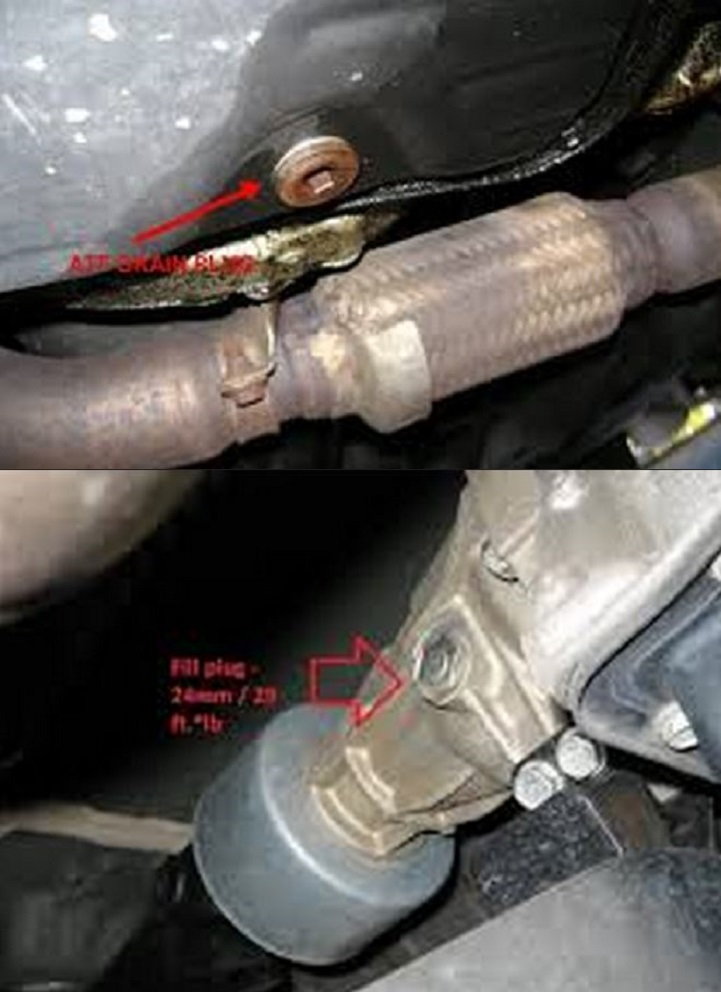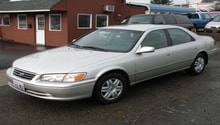Toyota Camry 1997-2011: How to Change Automatic Transmission Fluid
Transmission fluid is often a forgotten piece of maintenance. However, it is considered a very important one due to the high cost of the transmission and its repairs. Read on to learn how to replace the transmission fluid in your Toyota Camry.
This article applies to the Toyota Camry (1997-2011).
The automatic transmission fluid in your Camry is one of the most overlooked pieces of maintenance; because there's no large cap and port to remove and fill it. Many people don't consider changing it at all until they start having transmission issues. This is far too late, and that old burned up fluid is doing more harm than good. Changing the fluid may not be as simple as changing your motor oil. However, it is still a very easy process to follow. Don't be fooled into thinking you have to pay a hefty fee for a professional to do it for you. You can do this easy job yourself saving a bundle of cash in the process. It doesn't even take an hour, so you can do this job in the morning and not be late for work. If you do not have a dipstick in your model, you will need a fluid pump kit, which are pretty inexpensive, in which case, you may want to visit that transmission specialist after all. You can also consider renting the tool out at Autozone.

Materials Needed
- Catch pan for the old fluid
- Shop rags
- 10 mm hex wrench
- Transmission fluid transfer pump for vehicles without a dipstick
Check (and change) the transmission fluid when it is warm. The fluid expands when it is hot, so in order to get an accurate measurement, the fluid must be at operating temperature and checked when the car is in park. When replacing it, it's recommended you do so when the car is warm, because it allows the fluid to flush out easier.
Step 1 – Lift front end
Use a hydraulic floor jack on a level surface, and raise the front end of the car. Place the car on two jack stands in the correct and safest location as detailed in your owner's manual.

(Related Article: How to Jack Up Your Car - CamryForums.com)
Step 2 – Pull fill plug / drain plug
Under the vehicle, on the driver's side, you will find the ATF drain plug. The fill plug is really close just above the drain plug. It is a little difficult to see at first. You will want to remove the fill plug first with a 10 mm hex wrench. This will create the vacuum that you need when you drain it. If you do not pull the fill plug first, the fluid will come out in random patterns and get splattered all over the place. Once you remove the fill plug, remove the drain plug. If you do have a dipstick, remove that first and then remove the drain plug. Let the fluid drain out completely until it stops flowing.

Step 3 – Replace drain plug
Once all the fluid has drained, fill with fresh fluid.
- For models with dipsticks, you can use a small diameter funnel and fill through the dip stick tube with the appropriate ATF fluid stated in the manual.
- For models without dipsticks, you will need to use a fluid transfer pump and fill through the fill hole.
- Fill the transfer pump with the correct amount of fluid.
- Insert the transfer hose into the fill hole and pump all the new fluid into your transmission case.

Pro Tip
Inspect your old fluid closely. Look specifically for any metal shavings or large chunks of debris. This will indicate a transmission problem that you should have checked out by a professional. Otherwise, the fluid may be a dark color and may smell a little burnt. This is probably normal and indicates that you were ready for a fluid change.
Step 4 – Bring car to operating temperature
Start your car, put the emergency brake on, step on the brake pedal and shift through the gears, then bring it back to park. Let the car warm up completely and check your fluid level (if you have a dipstick). It is difficult to know the proper level of these sealed systems, so it is important that you can measure the amount of ATF that drained and replace with that same amount, or just slightly more. If the level is correct, drop the car and take it for a 10 minute test drive, then re-check. Add more fluid if necessary.
Featured Video: How to Change Automatic Transmission Fluid
Related Discussions
- 2012 Camry: How to Check Transmission Fluid Level - CamryForums.com
- 2007 Automatic Transmissions - CamryForums.com






